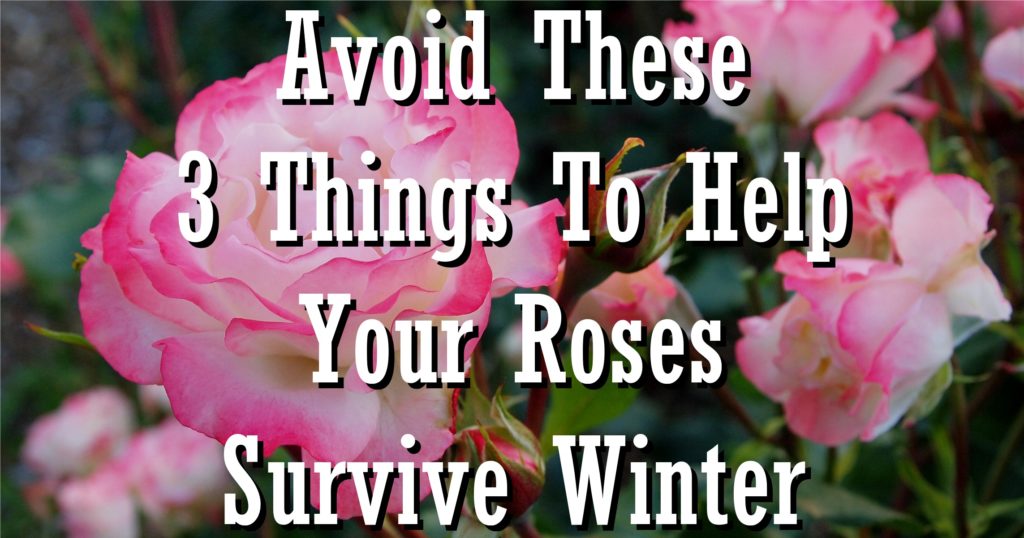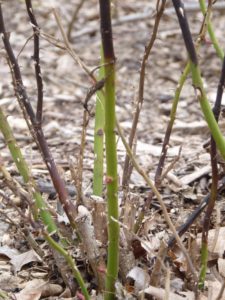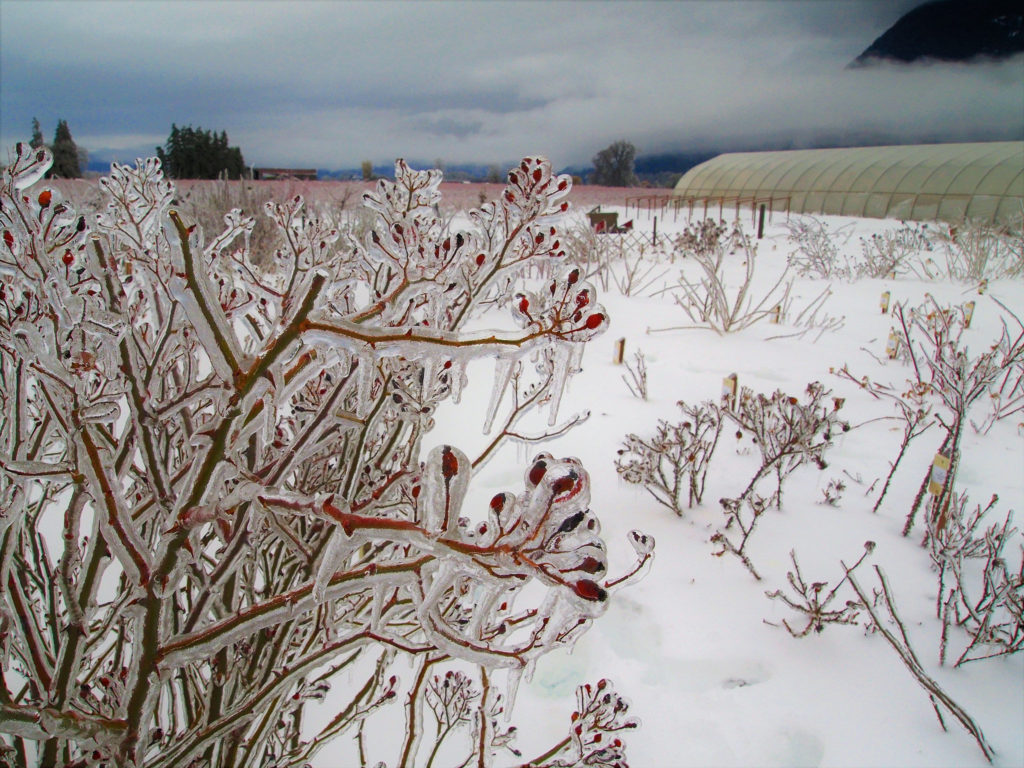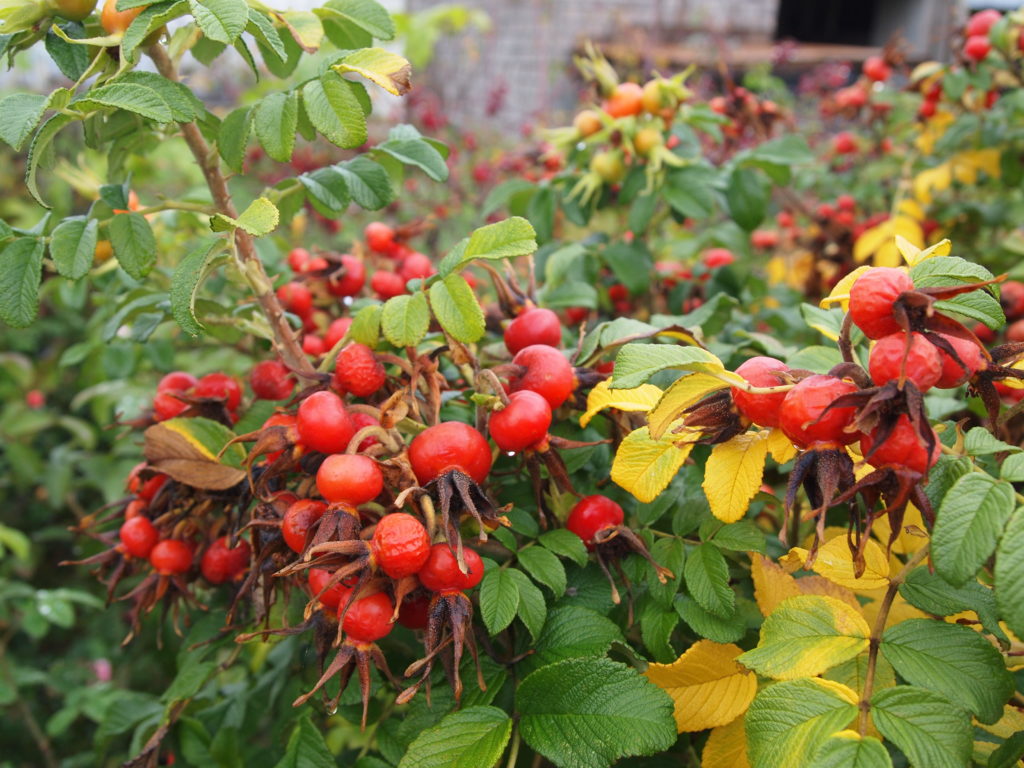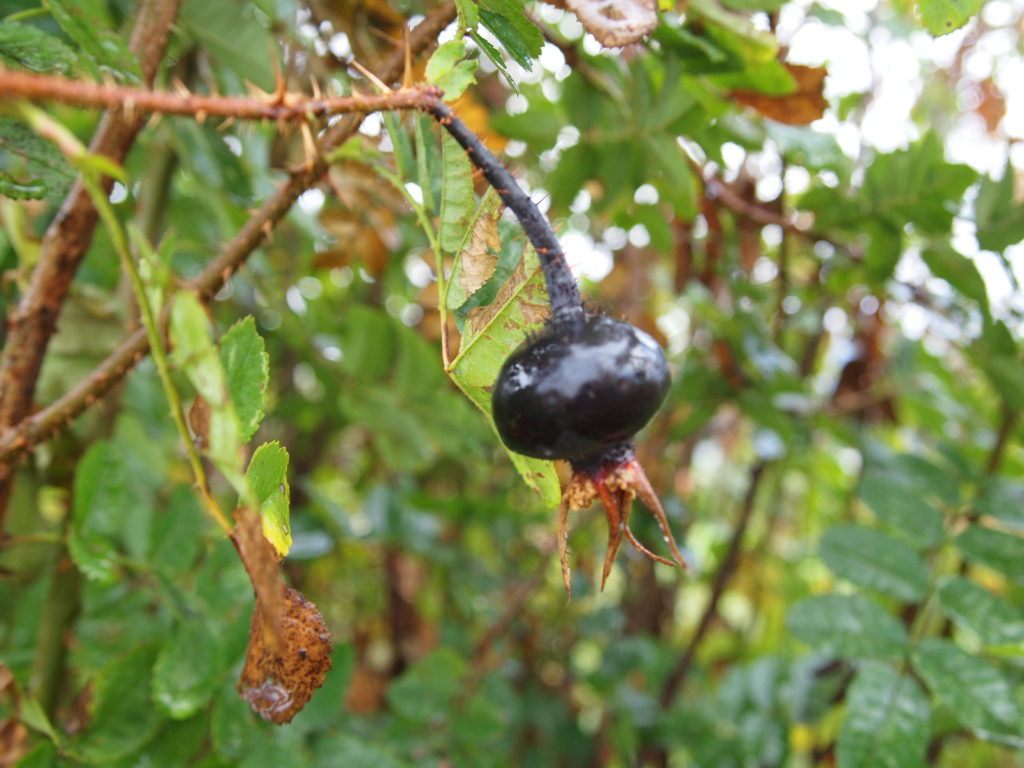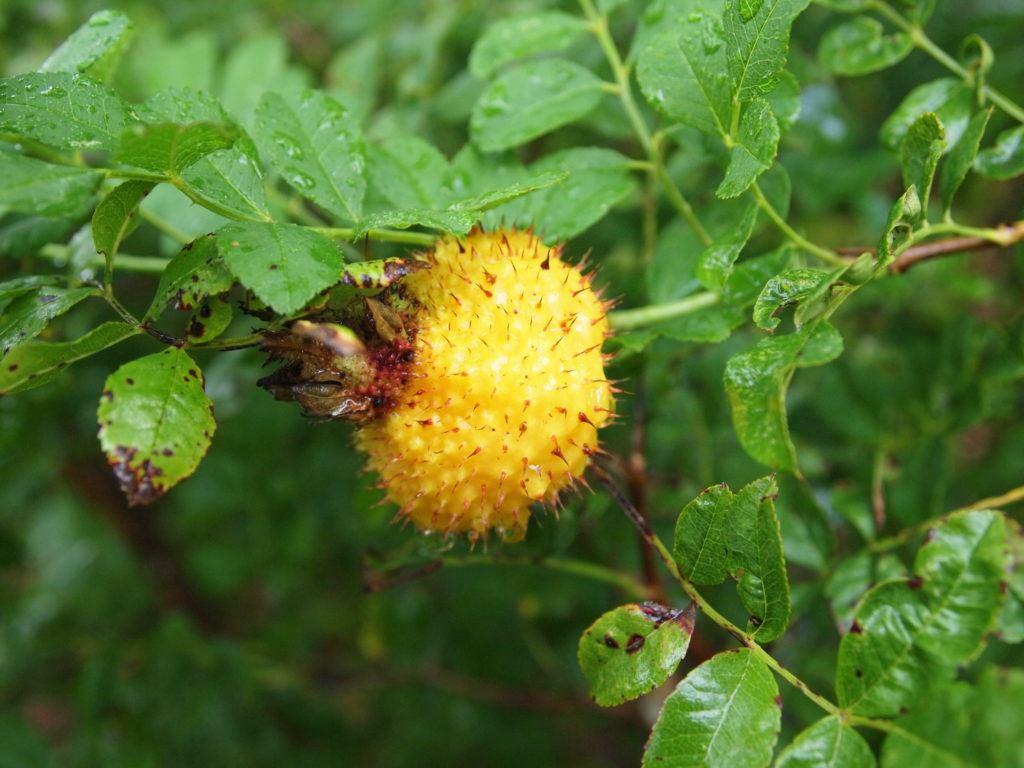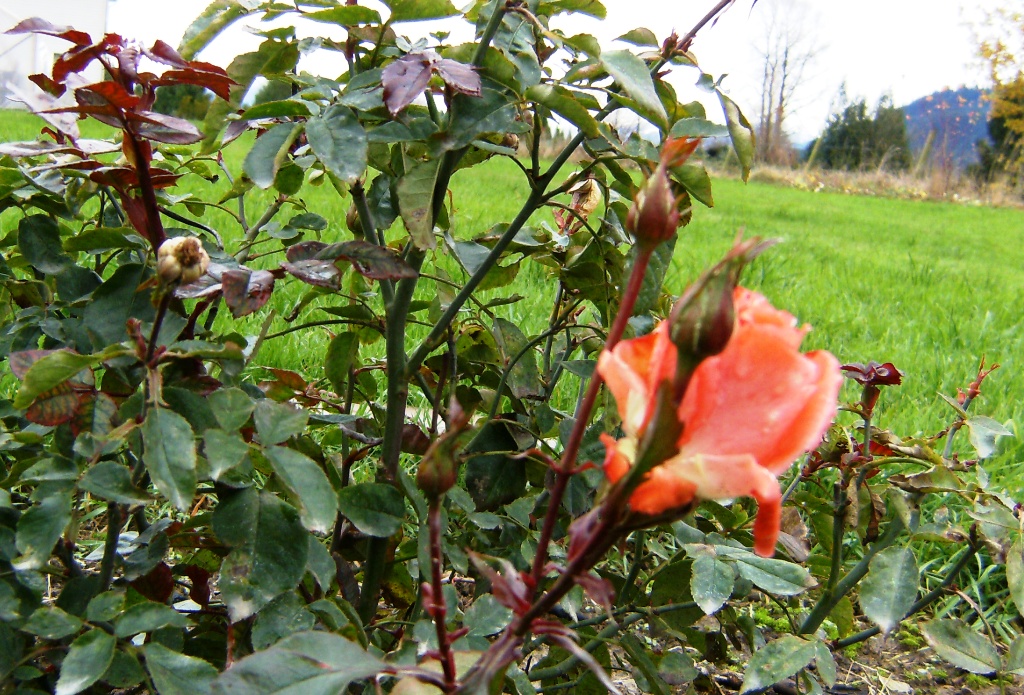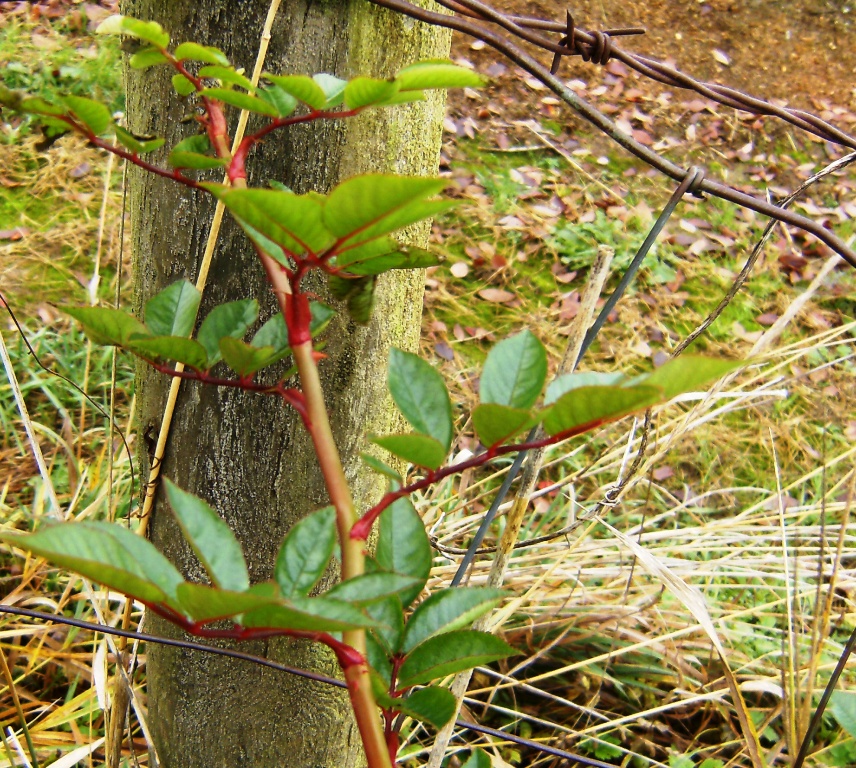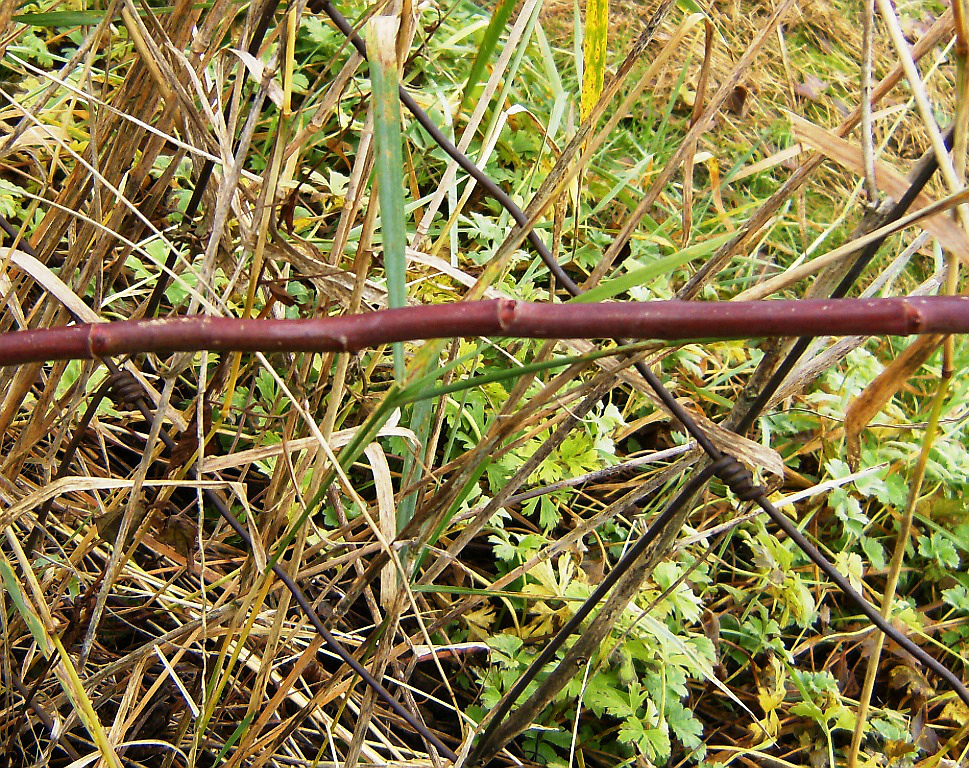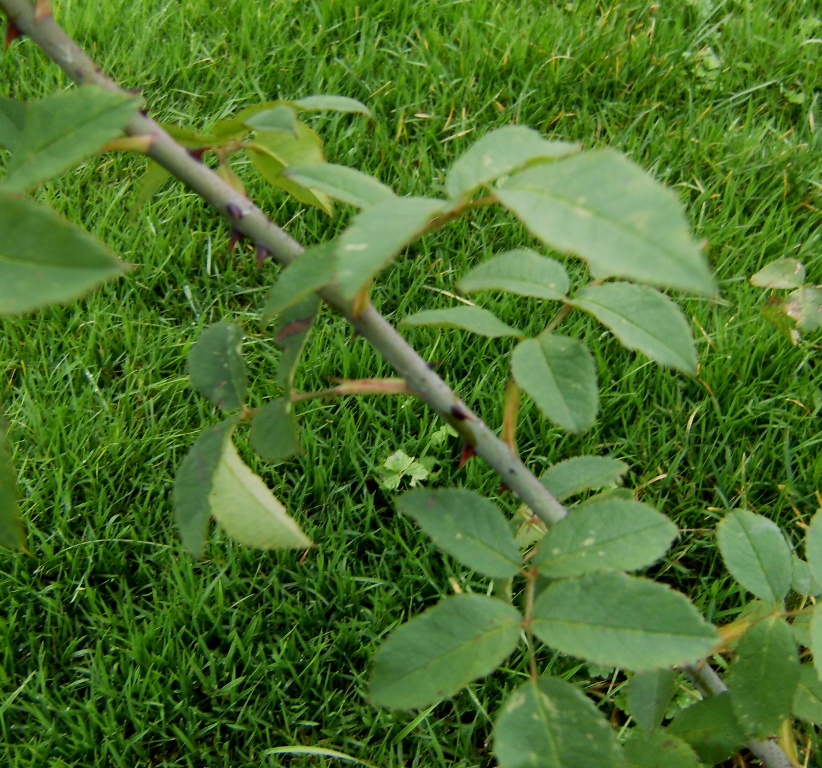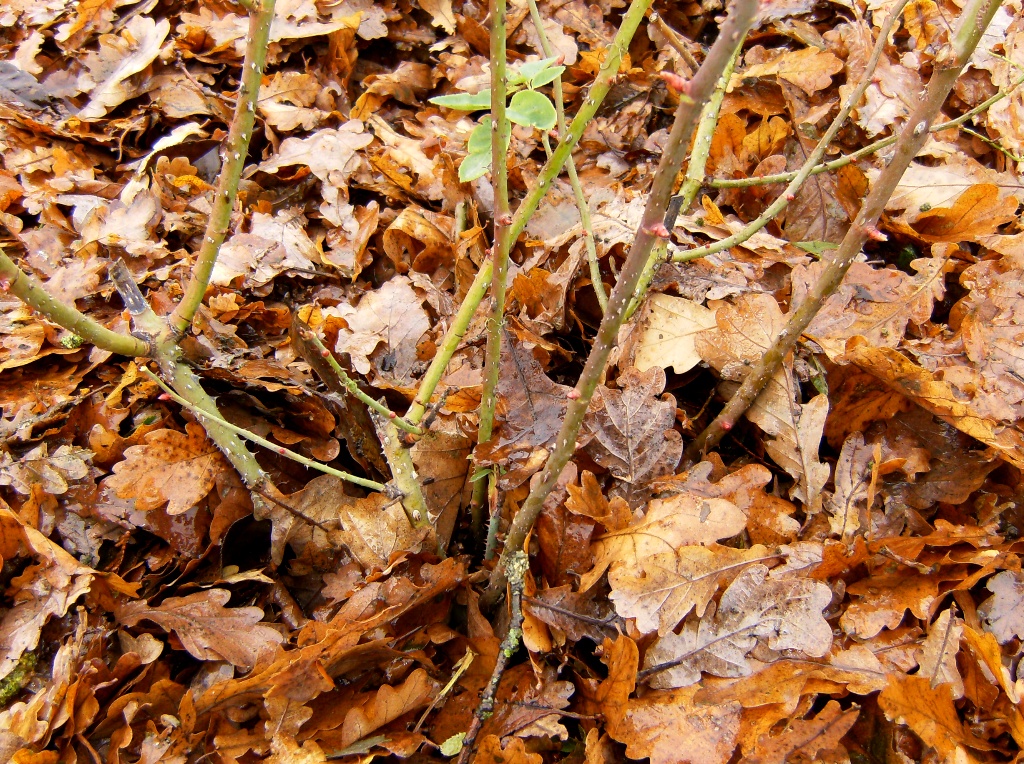Perennials, shrubs and trees are meant to be the enduring framework of your landscape through the seasons, so chances are that you chose them with your climate in mind. One particular criteria gardeners often use for their selection is the hardiness zone rating. It’s not a perfect system – and there are several other reasons why your plant could take winter damage – but the cold hardiness zones (and their familiar maps) offer at least some guidance about which plants should survive your winter.
Here’s the problem: not all winters fit predictably within allotted zones. If you’ve ever had a much colder winter than average, especially one with strong winds and not much snow cover, you may come out the other side wondering which of your “permanent” plantings survived. In this quick article, I’ll try to offer some guidance on how to assess the cold damage to your plants – after the ice and snow melts, that is!
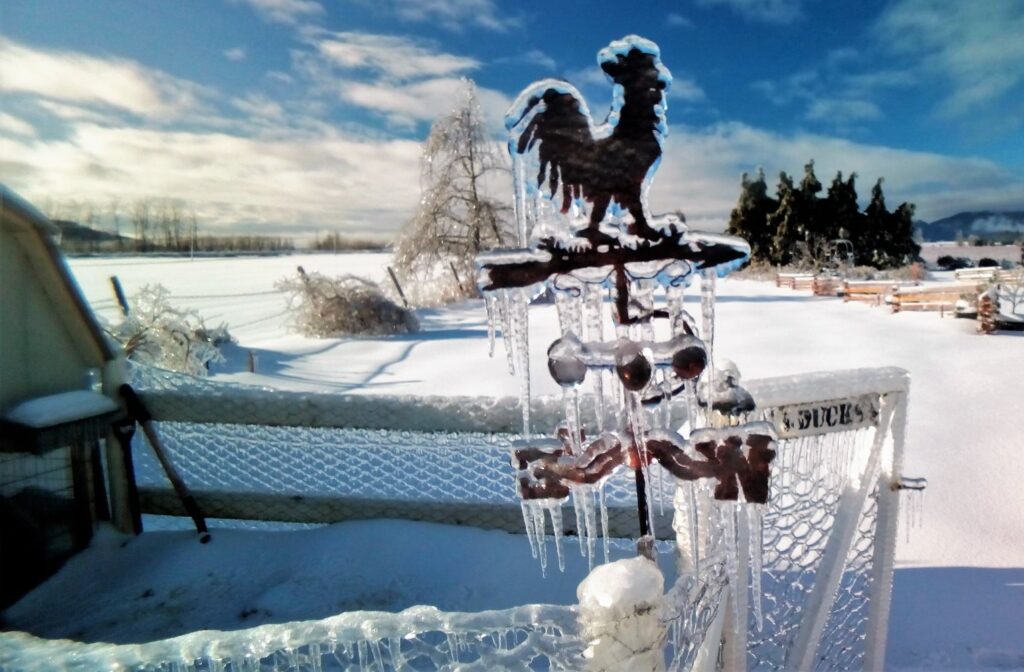
Patience…
Some plants are enthusiastic to push flowers (witch hazel, for instance) or leaf buds as soon as temperatures will allow. Others are notoriously slow and cautious – I use the example of hardy hibiscus (Hibiscus syriacus) which keeps its winter color and form with no signs of life until weeks later than everything else. Unless you have some pressing timeline (renovations, pending landscaping project, moving) I’d suggest you hold off the stress for a few weeks and give the plants an opportunity to show up for work.
Color
This won’t be as obvious for every plant, but generally the first signs of activity come from changes in the color of buds or stems. Shades of purple, pink, red, orange, yellow and (obviously) green are all hopeful signs that all is well with the plant.
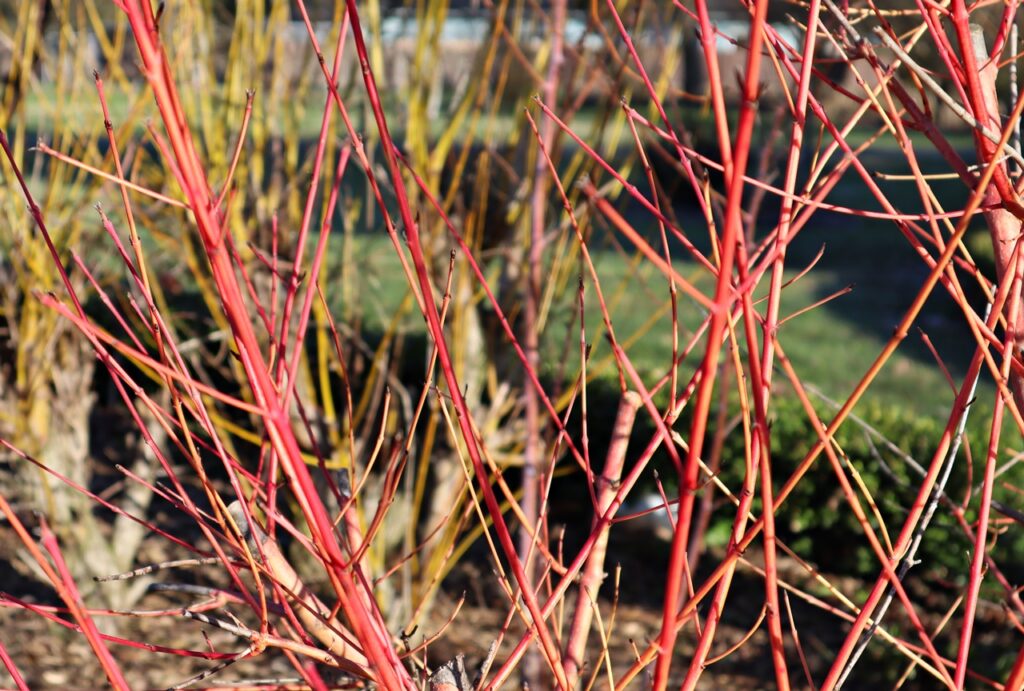
On the other hand, if the buds and stems seem to be deepening into dull shades of dark brown, grey or (especially) black it can be a warning that there’s been tissue damage in that part of the plant. I wouldn’t use this as a final evaluation of a plant – and I give more details in this video:
Buds
Beyond color, I’m also looking for changes in the size and shape of the buds. Over the winter, the dormant buds are smaller, and usually held relatively tightly to the stem. Here’s an example from a sugar maple tree:
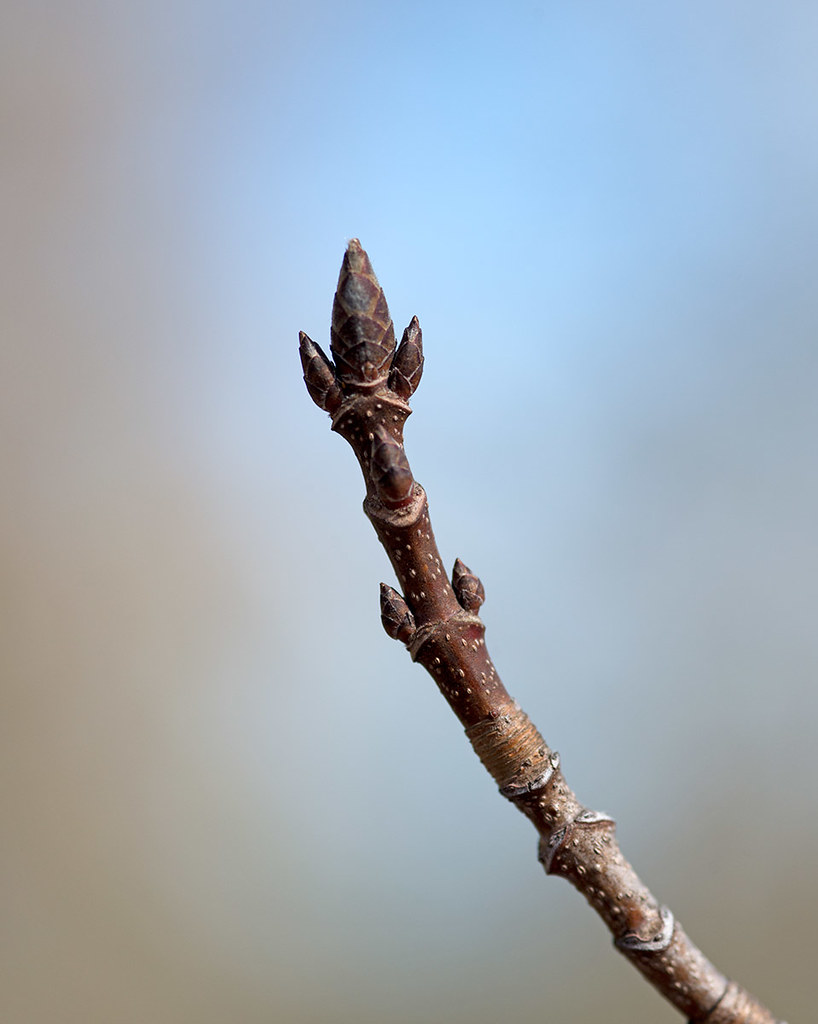
When preparing to break into spring growth, in addition to any color changes these buds will begin to enlarge in preparation for developing shoots or flowers:
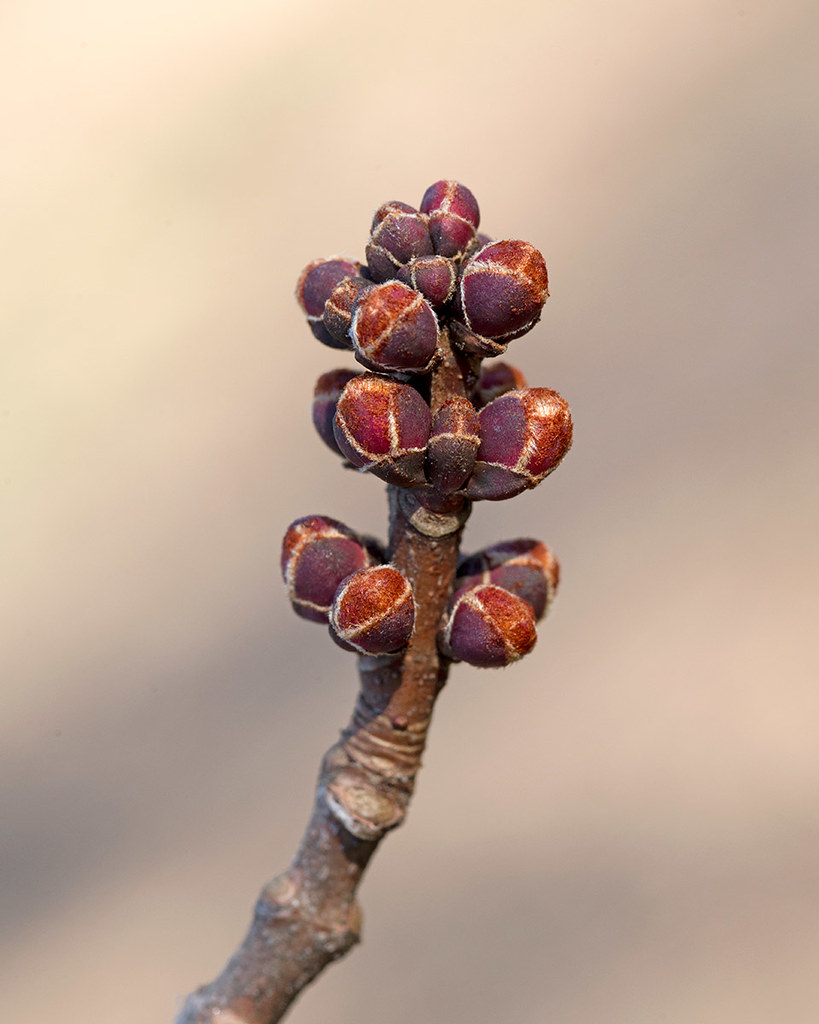
For perennials, you can often look for the same changes, but you’ll have to gently tease away the soil and mulch from around their crown to see if the shoots are elongating or taking on a spring color.
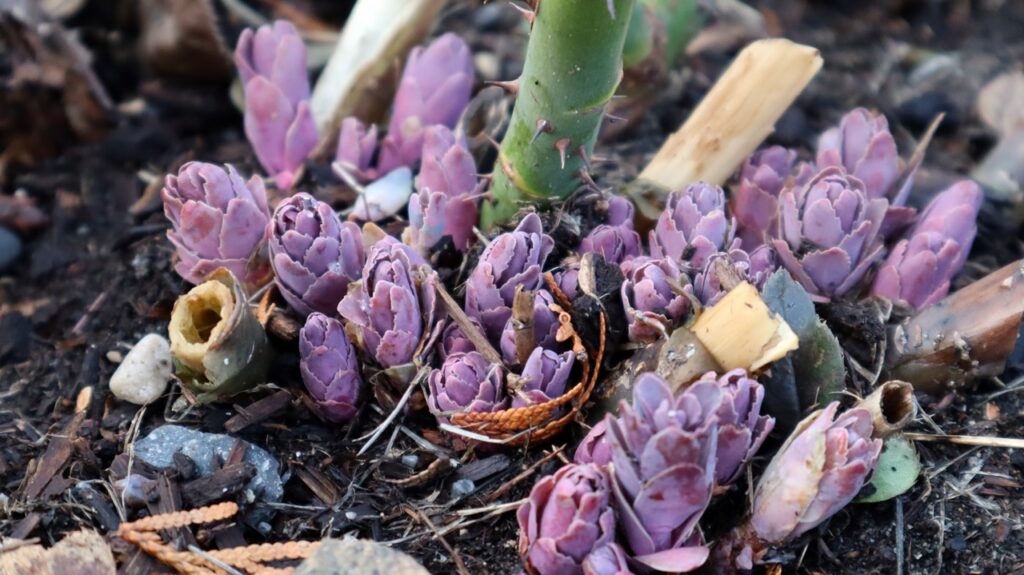
I mention these changes to the color of stems and the size and shape of buds because they’re visual and can set your mind at ease without causing any damage to the plant. However, if you’re eager to get an answer and your plant isn’t showing any outwards signs, it may be time for a more hands-on approach:
Scrape or Snap
This next test is something landscapers are not hesitant to perform if there’s any doubt. A little scratch with a pruning blade (or even thumbnail) will reveal the color and condition of the inner bark. Green – in all it’s variations, including pale greenish yellow and nearly white – is what you’re looking for.
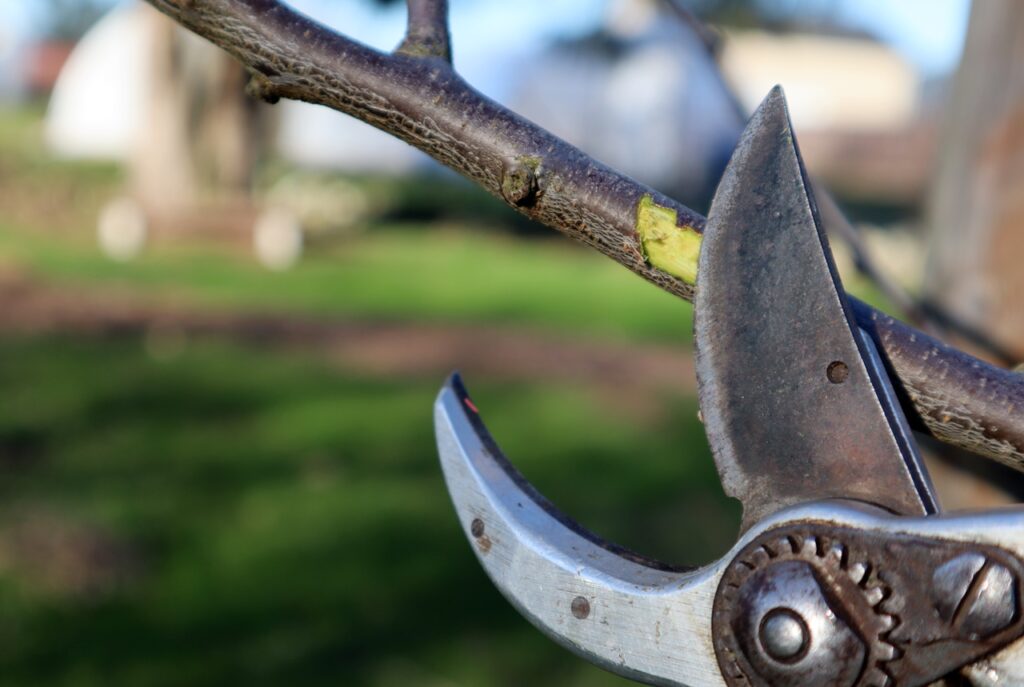
Black, pale brown or grey are bad signs. Another variation of this test is where you’d snap off one of the smaller stems on a tree or shrub’s extremities, and examine the color of the inner bark at the point of the break. This “snap test” also can reveal whether the wood of the stem is still somewhat moist and flexible (alive) or dry and brittle (dead). There’s a demonstration in the video I linked earlier in the article. On perennials the above-ground parts will most often have died back over winter, so any poking and prodding will be focused on the crown of the plant – where firmness is a good sign and mushy or moldy definitely are not!
What to do about it?
If you’ve given it a reasonable amount of time and then confirmed that a plant has died over the winter, there’s little you can do except remove the plant and make new gardening plans. In many cases, however, the cold may have damaged only the extremities, leaving the plant to regrow from its healthy roots and crown. I get messages from concerned gardeners every year asking what else they can do to help bring their plants back from the damage. It might be more a matter of what not to do. Don’t throw an unusual amount of fertilizer at the plant, hoping to spur on aggressive new growth. Excess fertilizer can compound the stress of the injury. There’s little evidence that a B1 vitamin product will help. I wouldn’t hit the plant with a preemptive application of pesticide/fungicide either.
It’s really just a matter of pruning to remove the dead, damaged and diseased parts of the plant, and offering good garden conditions just as you aim to do for all your garden plants. I specialize in roses, but the following video where I discuss how and when to prune back winter damage would apply across a wide range of woody plants:
Finally, it’s worth repeating that not all winter damage is due to the cold itself. If you’re looking to adjust your planning for coming years, it may not be a matter of just cheating down on the hardiness zone map (although that’s not a bad idea when growing in a more exposed location or in a container). I linked this video at the top of the article, but if you’ve come this far I may as well offer it again:


